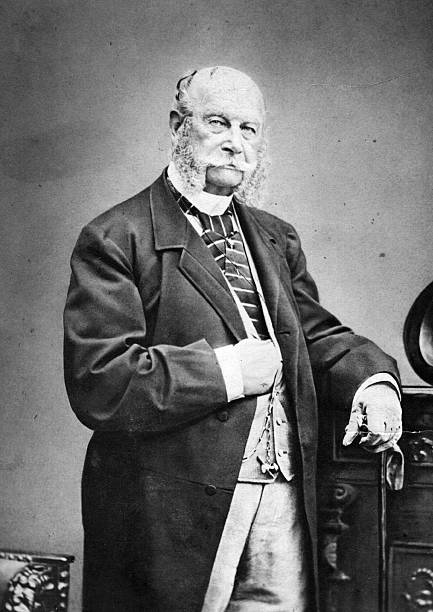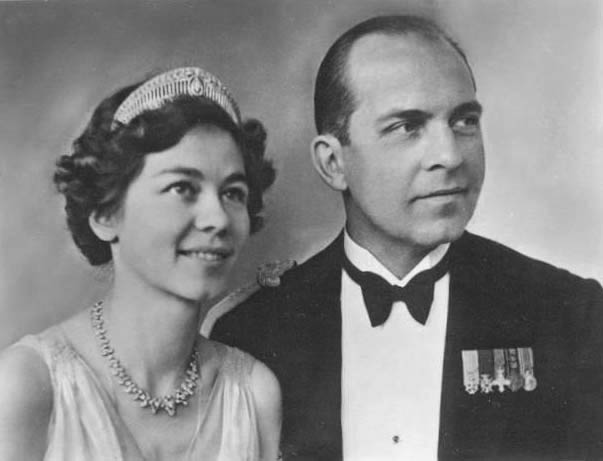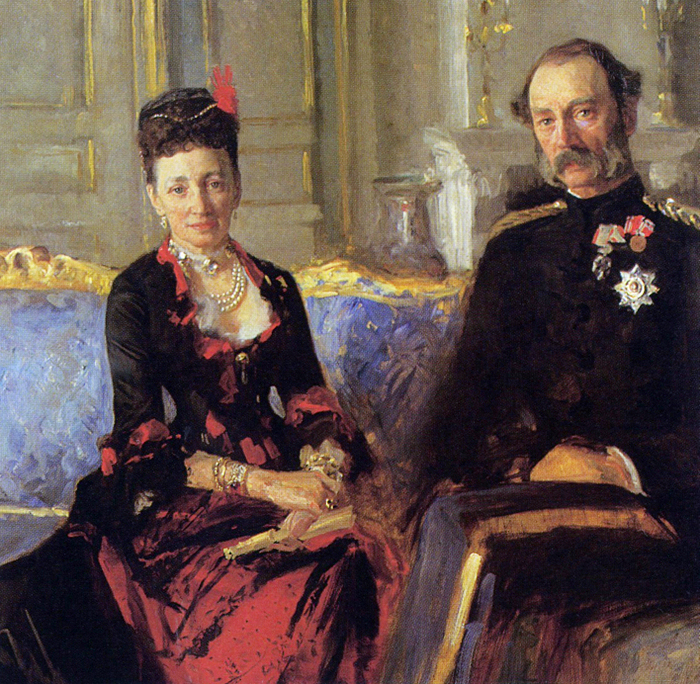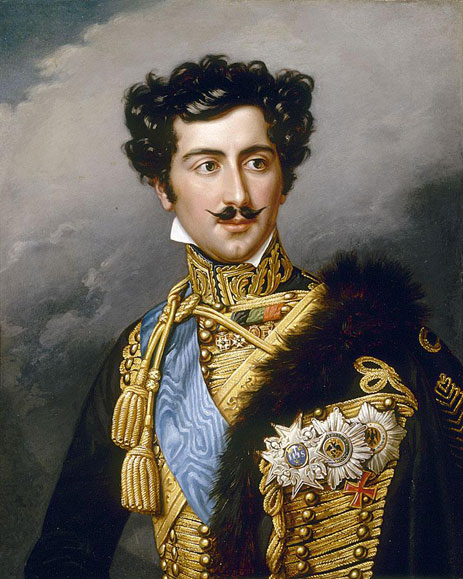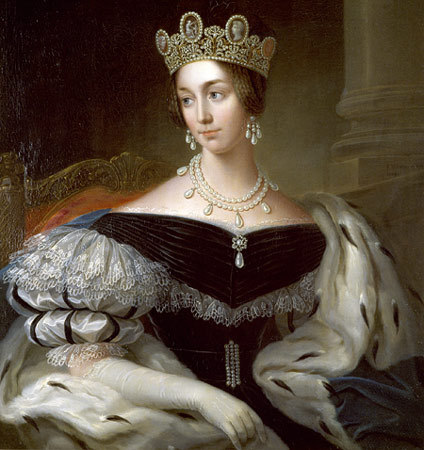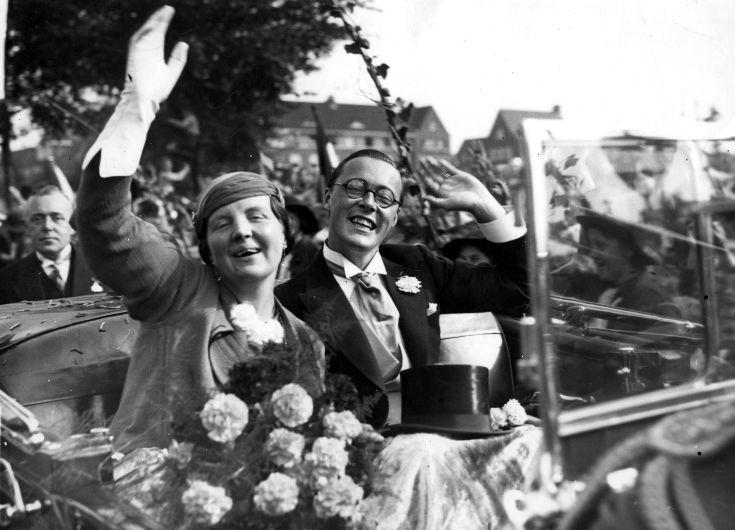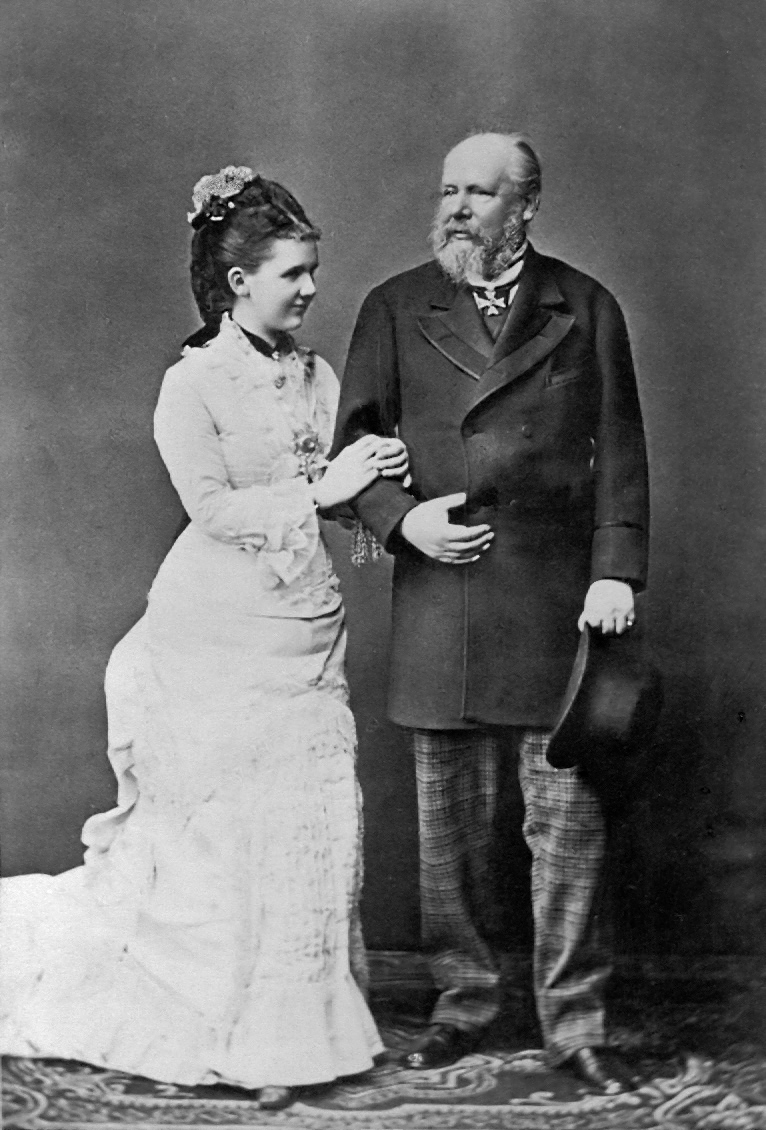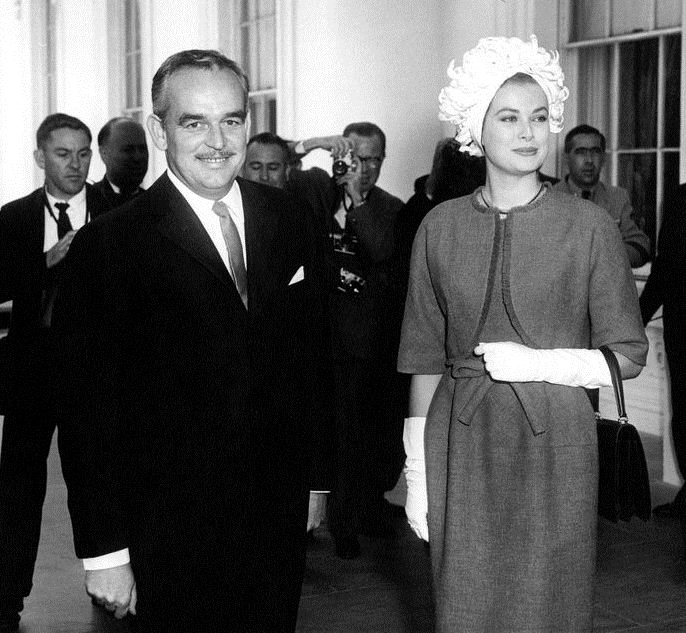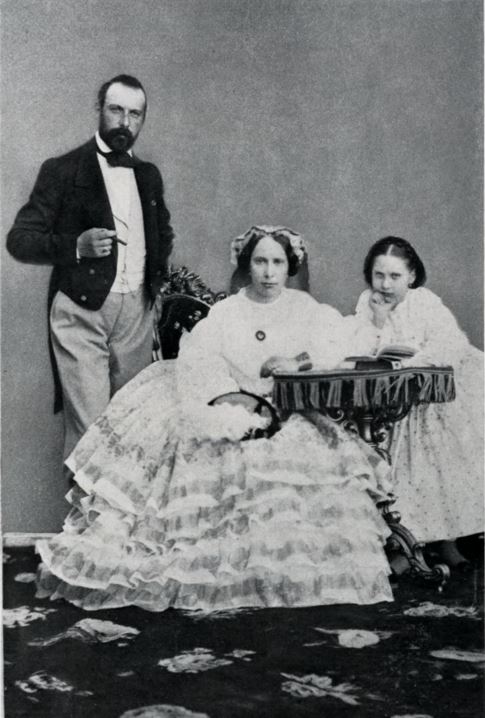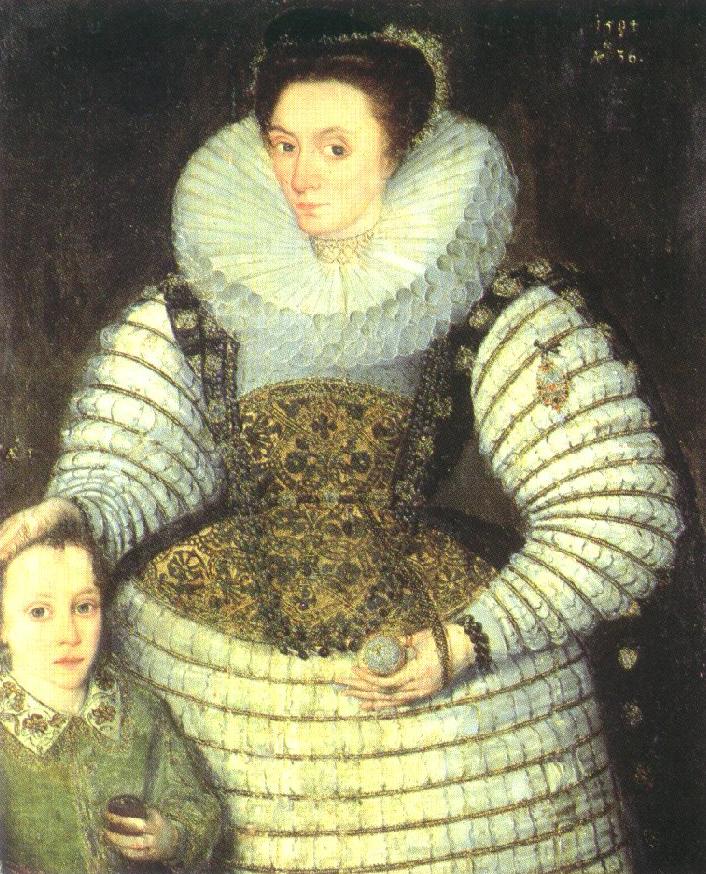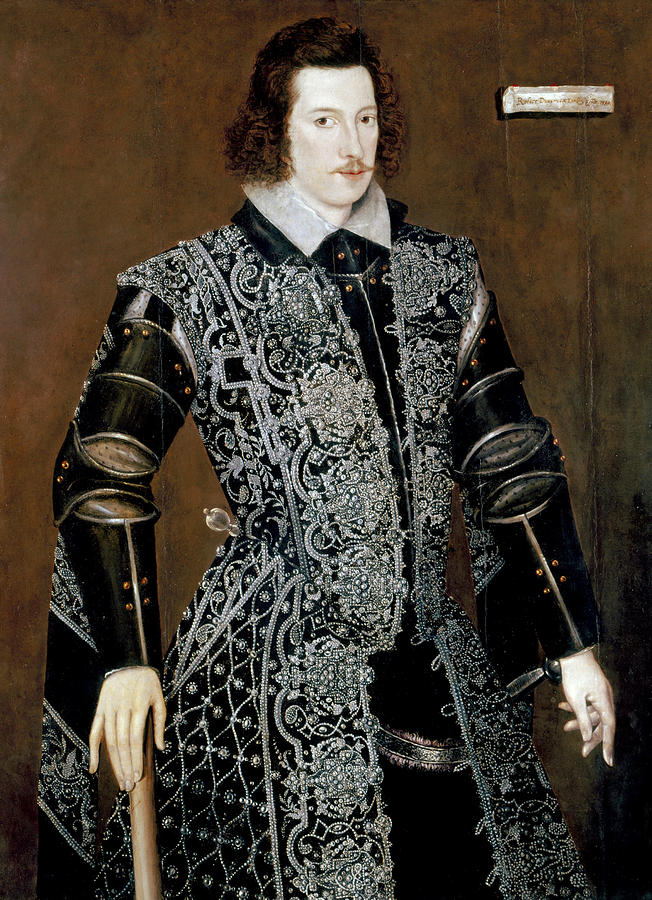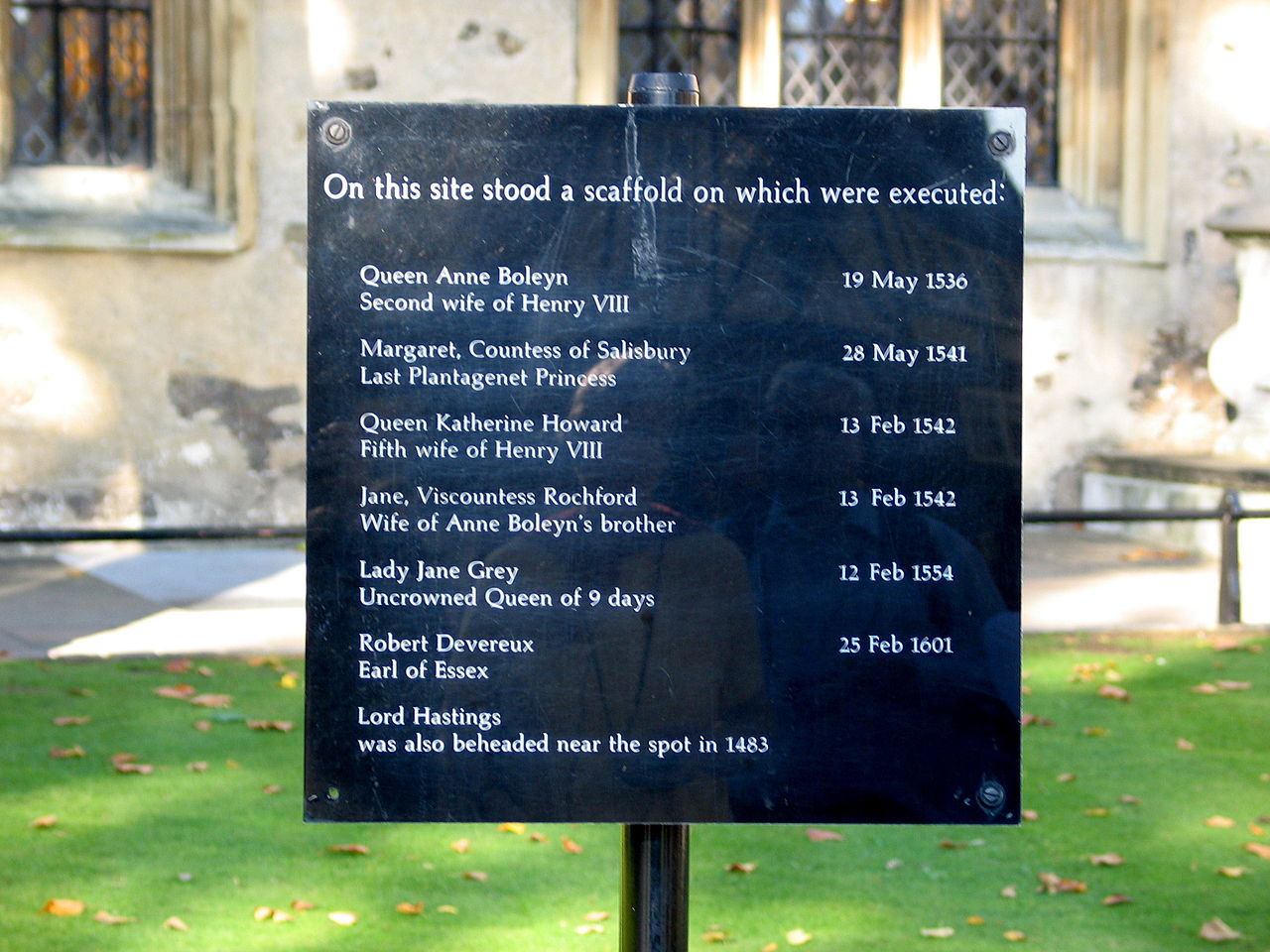by Susan Flantzer
© Unofficial Royalty 2021
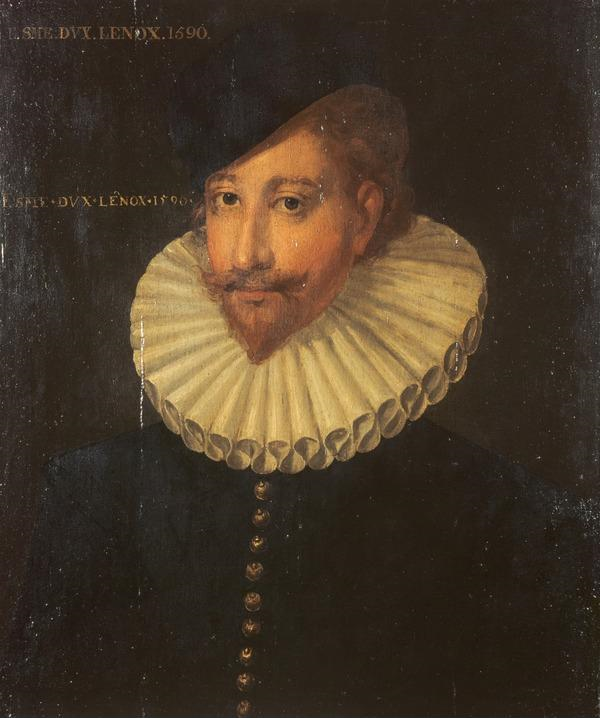
Esmé Stewart, 1st Duke of Lennox; Credit – Wikipedia
Favorite: a person treated with special or undue favor by a king, queen, or another royal person
Esmé Stewart, 1st Duke of Lennox, born circa 1542 in France, was the only child of John Stewart, 5th Lord of Aubigny (died 1567) and Anne de la Queuille, a French noblewoman. Esmé’s paternal grandfather was John Stewart, 3rd Earl of Lennox, a prominent Scottish lord. In 1526, John Stewart, 3rd Earl of Lennox led an army to Linlithgow Palace intending to free the young James V, King of Scots from the pro-English Douglases. The 3rd Earl of Lennox was taken captive and murdered. He was succeeded by his eldest son Matthew Stewart, 4th Earl of Lennox who married Lady Margaret Douglas, the daughter of Margaret Tudor, eldest daughter of King Henry VII of England. Their son was Henry Stuart, Lord Darnley, second husband and first cousin of Mary, Queen of Scots and the father of her only child James VI, King of Scots, later also King James I of England. Esmé and Lord Darnley were first cousins and so Esmé and James VI, King of Scots were first cousins once removed.

Château d’Aubigny; Credit- By Gerd Eichmann – Own work, CC BY-SA 4.0, https://commons.wikimedia.org/w/index.php?curid=79618765
In 1531, Esmé’s father John Stewart became an officer of the King of France’s Body Guard of Scots Archers and from 1536 – 1560, he served as the Captain of the Scots Archers. In 1544, John Stewart succeeded his great-uncle Sir Robert Stewart, 4th Lord of Aubigny, and inherited all his great-uncle’s estate including the Château d’Aubigny. Esmé spent part of his childhood at the French court. Upon his father’s death on May 31, 1567, Esmé succeeded him as 6th Lord of Aubigny. In 1572, Esmé married, Catherine de Balsac (died circa 1631), a distant cousin of his mother, and they had five children:
- Lady Gabrielle Stewart, a nun in Glatigny, France
- Lady Henrietta Stewart (1573 – 1642), who George Gordon, 1st Marquess of Huntly, had six children
- Ludovic Stewart, 2nd Duke of Lennox (1574 – 1624), married (1) Sophia Ruthven, no children (2) Jean Campbell, no children (3) Frances Howard, no children
- Esmé Stewart, 3rd Duke of Lennox (1579 – 1624), married Katherine Clifton, 2nd Baroness Clifton, had eleven children
- Lady Marie Stewart (circa 1582 – 1644), married John Erskine, 2nd Earl of Mar, 7th Lord Erskine, had ten children
The death in 1576 of his first cousin Charles Stewart, 5th Earl of Lennox (brother of Henry Stuart, Lord Darnley who was the father of King James VI) without male heirs, opened up the possibility for Esmé to acquire the Earldom of Lennox since the new Earl, Robert Stewart, Esmé’s uncle, was in his 50s and childless. In September 1579, Esmé first came to Scotland, the homeland of his family, and was introduced to his first cousin once removed, thirteen-year-old James VI, King of Scots. Twenty-four years later, upon the death of Queen Elizabeth I of England, James would succeed her as King James I of England because of his descent from King Henry VII of England through his eldest daughter Margaret Tudor. Both his parents were grandchildren of Margaret Tudor. Esmé, having been raised in France and being a member of the Stewart family, fascinated James, and Esmé quickly became a favorite.
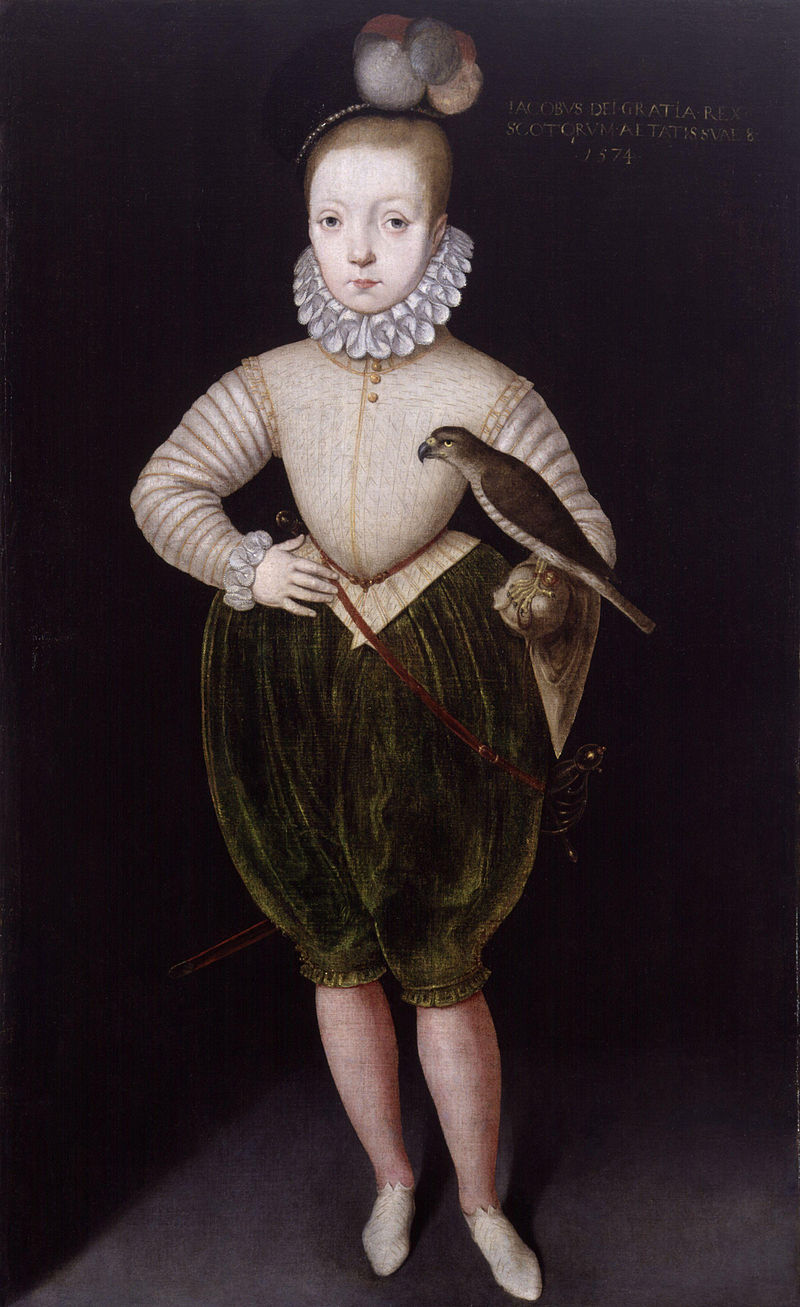
James VI, King of Scots, circa 1574; Credit – Wikipedia
Whether the personal relationship between James VI and his male favorites was a sexual one is still debated by historians. Some historians think that James’ need for a close male favorite came from a lack of family while growing up in Scotland where he became King of Scots when he was one-year-old. James did not know his parents Henry Stuart, Lord Darnley and Mary, Queen of Scots and he had no siblings. His maternal grandparents James V, King of Scots and Marie of Guise died before he was born. His paternal grandfather Matthew Lennox, 4th Earl of Lennox died while James was still a young boy and his paternal grandmother Lady Margaret Douglas lived in England until she died in 1578.
Favors soon came Esmé’s way. In 1580, James VI forced Esmé’s uncle Robert Stewart to resign his Earldom of Lennox and Lordship of Darnley. Instead, Robert Stewart was given the titles Earl of March and Lord of Dunbar, and Esmé was created Earl of Lennox and Lord of Dunbar. In 1581, Esmé was appointed to the Privy Council of Scotland and created Duke of Lennox, Earl of Darnley, and Lord Aubigny, Dalkeith, Torboltoun, and Aberdour. James VI gave Esmé jewels that from the collection of his mother Mary, Queen of Scots.
Esmé was a Roman Catholic and while Scotland once was Roman Catholic, the Church of Scotland was Presbyterian, a form of Calvinistic Protestantism. The Church of Scotland did not trust the Catholic Esmé and he had to convert to the Presbyterian religion so that he would not lose his power. However, the Church of Scotland remained suspicious of Esmé’s conversion and was further alarmed when James Douglas, 4th Earl of Morton, the last of the four Regents of Scotland during the minority of King James VI, was arrested and beheaded on charges of treason.

Ruthven Castle now called Huntingtower Castle; Credit – By Astrid Horn, CC BY-SA 2.0, https://commons.wikimedia.org/w/index.php?curid=14282500
In response to the execution of the Earl of Morton, a group of Scottish nobles plotted to oust Esmé. In August 1582, in what became known as the Ruthven Raid, William Ruthven, 1st Earl of Gowrie and Archibald Douglas, 8th Earl of Angus lured James VI, King of Scots to Ruthven Castle and held him there. James VI was forced to banish Esmé and an official denunciation was issued in September 1582 citing Esmé’s religion, his control over the royal household and international intrigue, and his association with the murderers of Henry Stuart, Lord Darnley (James VI’s father), James Stewart, 1st Earl of Moray (illegitimate son of James V, King of Scots, Regent of Scotland for James VI, from 1567 until his assassination in 1570) and Matthew Stewart, 4th Earl of Lennox (James VI’ paternal grandfather, Regent of Scotland for James VI, from 1570 until his murder in 1571).
Esmé returned to France and corresponded secretly with James VI. The Scottish nobles were convinced that once in France Esmé would return to Catholicism but Esmé remained a Presbyterian, although he is buried in a Catholic church. Shortly before his death, Esmé wrote to James Stewart, 1st Lord Doune, asking him to take care of his son and heir Ludovic and help him recover his former possessions in Scotland. Esmé Stewart, 1st Duke of Lennox died in Paris, France on May 26, 1583, aged 40 – 41. He was buried at the Church of Saint-Martin in Aubigny-sur-Nere, France. William Schaw, Master of Works to James VI, King of Scots was in Paris at the time of Esmé’s death and he took Esmé’s heart back to Scotland.

Church of Saint-Martin in Aubigny-sur-Nere, France; Credit – By Ji-Elle – Own work, CC BY-SA 3.0, https://commons.wikimedia.org/w/index.php?curid=27055521
King James VI memorialized Esmé in a poem called Ane Tragedie of the Phoenix that compares Esmé to an exotic bird of unique beauty killed by envy. For the rest of his life, James kept Esmé’s family in high regard and told his son and heir King Charles I of England to do the same. King Charles I faithfully fulfilled this obligation and the Lennox family had considerable influence at the Scottish and English courts for three generations. All Esmé’s surviving children except Gabrielle who was a nun, came to Scotland and/or England, married there, and lived out their lives there. Esmé’s elder son Ludovic Stewart succeeded him as 2nd Duke of Lennox. Esmé’s great-grandson Charles Stewart, 3rd Duke of Richmond, 6th Duke of Lennox died without male heirs in 1672, and the Duke of Lennox title became extinct. In 1675, the titles Duke of Richmond, Duke of Lennox and Earl of March, were revived for Charles Lennox, 1st Duke of Richmond and Lennox, the illegitimate son of King Charles II of England by his mistress Louise de Kérouaille, and his descendants still hold the titles.
This article is the intellectual property of Unofficial Royalty and is NOT TO BE COPIED, EDITED, OR POSTED IN ANY FORM ON ANOTHER WEBSITE under any circumstances. It is permissible to use a link that directs to Unofficial Royalty.
Works Cited
- En.wikipedia.org. 2020. Esmé Stewart, 1St Duke Of Lennox. [online] Available at: <https://en.wikipedia.org/wiki/Esm%C3%A9_Stewart,_1st_Duke_of_Lennox> [Accessed 15 December 2020].
- En.wikipedia.org. 2020. John Stewart, 3Rd Earl Of Lennox. [online] Available at: <https://en.wikipedia.org/wiki/John_Stewart,_3rd_Earl_of_Lennox> [Accessed 15 December 2020].
- En.wikipedia.org. 2020. Personal Relationships Of James VI And I. [online] Available at: <https://en.wikipedia.org/wiki/Personal_relationships_of_James_VI_and_I#George_Villiers.2C_1st_Duke_of_Buckingham> [Accessed 10 December 2020].
- Ru.wikipedia.org. 2020. Стюарт, Эсме, 1-Й Герцог Леннокс. [online] Available at: <https://ru.wikipedia.org/wiki/%D0%A1%D1%82%D1%8E%D0%B0%D1%80%D1%82,_%D0%AD%D1%81%D0%BC%D0%B5,_1-%D0%B9_%D0%B3%D0%B5%D1%80%D1%86%D0%BE%D0%B3_%D0%9B%D0%B5%D0%BD%D0%BD%D0%BE%D0%BA%D1%81> [Accessed 15 December 2020].





